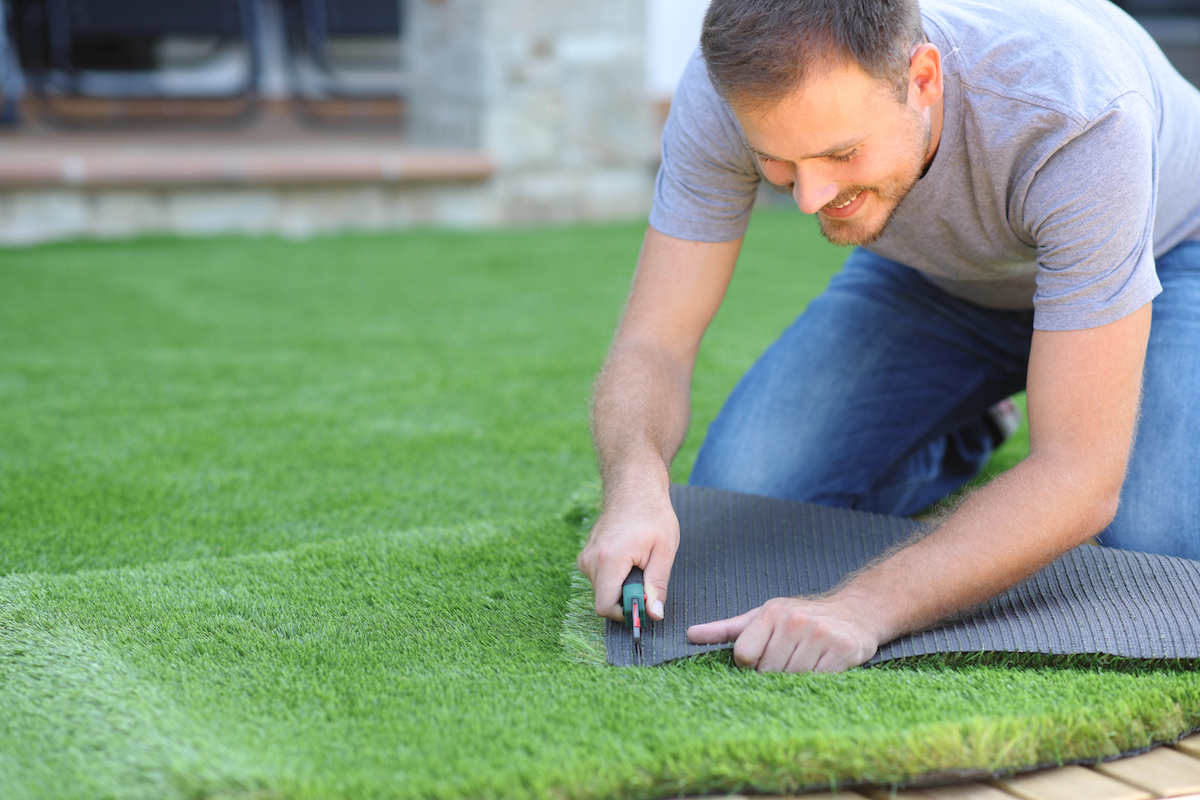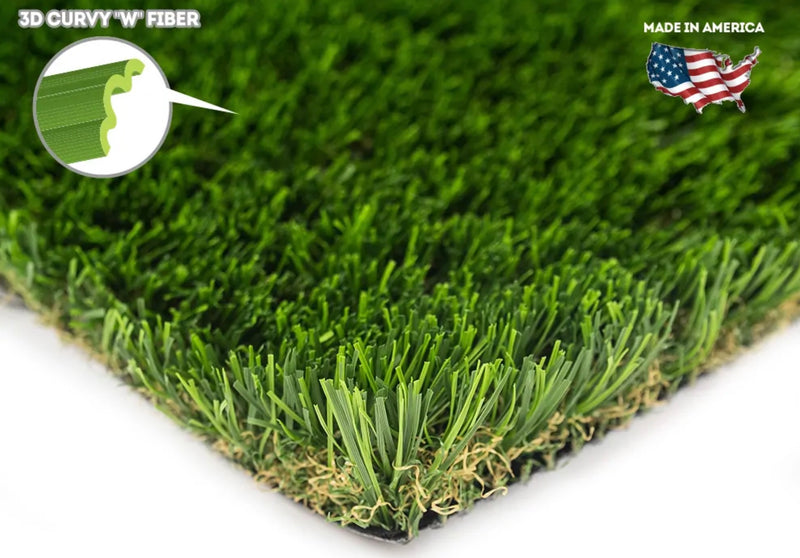Find the Best Turf Installation Phoenix AZ Solutions for Your Home or Commercial Property
Find the Best Turf Installation Phoenix AZ Solutions for Your Home or Commercial Property
Blog Article
Look Into the Environmental Benefits of Opting for Synthetic Grass Solutions
The adoption of synthetic grass solutions presents an engaging opportunity to resolve pushing ecological obstacles. By dramatically reducing water use and decreasing the application of damaging chemicals, these choices not just promote sustainable landscape design yet likewise secure regional communities. Furthermore, the lower carbon impact connected with decreased upkeep tasks contributes to a more lasting method to land management. Nonetheless, the ramifications of these advantages prolong beyond plain conservation initiatives, increasing inquiries regarding their long-term influence on environment preservation and total environmental equilibrium. Checking out these measurements reveals a complicated interaction worth thinking about.
Water Preservation Benefits
One of the most considerable advantages of artificial lawn is its capacity to save water. In contrast, artificial lawn does not require watering, considerably decreasing the total need for water resources.
By eliminating the demand for regular watering, synthetic grass contributes to sustainable landscape methods and aids reduce the ecological influence of excessive water usage. The preservation of water expands to the decrease of runoff, which can lead to soil erosion and waterway contamination.
In addition, the installment of synthetic grass enables home owners and municipalities to allocate water resources much more successfully, concentrating on vital usages such as drinking water and agriculture. The change towards synthetic grass not just promotes accountable water use however also aligns with broader environmental objectives intended at protecting all-natural sources.
As communities progressively focus on sustainability, the water preservation benefits of synthetic grass provide an engaging instance for its adoption in domestic and commercial landscaping jobs.
Decreased Chemical Usage
The change to synthetic grass dramatically lowers the reliance on chemical treatments typically made use of in natural lawn maintenance. Standard turf monitoring normally involves the application of herbicides, chemicals, and fertilizers to advertise growth and control pests. These chemicals can present risks to human health, neighborhood wildlife, and the environment, adding to soil and water contamination.
In contrast, synthetic lawn removes the requirement for these dangerous compounds. By reducing the release of artificial compounds into the environment, artificial grass advertises healthier dirt and water systems.
Furthermore, the lack of chemical overflow connected with synthetic grass installations assists safeguard neighborhood waterways from pollution, sustaining water life and maintaining biodiversity. Turf installation phoenix az. As areas significantly prioritize lasting methods, choosing for man-made grass offers a viable service that aligns with ecological conservation goals. Via this change, home owners can delight in rich green areas without compromising eco-friendly health and wellness, leading the way for an extra sustainable future
Lower Carbon Impact

Furthermore, the installment of synthetic grass can cause considerable water preservation. Natural yards need substantial amounts of water for irrigation, which not just this website includes to the carbon footprint connected with water removal and therapy but likewise pressures local water resources. In comparison, fabricated turf needs very little upkeep, calling for no watering, thereby substantially minimizing water use and its read here linked energy costs.
Furthermore, the durability of synthetic grass contributes to its lower carbon effect. With a life expectancy of as much as 15 years or more, the requirement for regular substitutes is diminished, leading to less waste and lower energy consumption in production and throwing away traditional turf choices. Overall, fabricated lawn offers a lasting choice for ecologically conscious landscaping.
Environment Conservation
Environment conservation is an essential consideration in the discussion over landscaping options, especially when contrasting fabricated grass to natural yard. All-natural turf lawns usually require comprehensive maintenance, consisting of using plant foods, herbicides, and chemicals, which can detrimentally affect local communities. These chemicals can seep right into the dirt and rivers, damaging native flora and fauna and disrupting local habitats.
On the other hand, synthetic grass presents an opportunity to decrease the eco-friendly impact of landscaping. By selecting artificial turf, home owners can minimize the disturbance of all-natural environments connected with typical yard care techniques. Artificial lawn eliminates the demand for harmful chemicals, thus protecting neighboring wildlife and maintaining the honesty of bordering ecological communities. In addition, the installation of fabricated grass can lead to the conversion of former lawn locations into more biodiverse landscapes, such as pollinator gardens or indigenous plant areas, which can sustain regional wildlife.
Inevitably, the transition to synthetic turf not just preserves water and decreases maintenance efforts but likewise cultivates a more harmonious relationship in between human tasks and the native environment, advertising environment preservation at the same time.
Long-Term Sustainability
Long-lasting sustainability is an essential factor in examining the benefits of synthetic grass over conventional turf lawns. One of one of the most significant benefits of man-made turf is its longevity; it can last approximately 15-20 years with minimal maintenance, whereas natural yard needs constant reseeding and replacement. This durability minimizes the need for consistent resources, such as water, fertilizers, and chemicals, which are important for preserving a healthy turf yard.
In addition, synthetic grass contributes to a decrease in carbon exhausts related to yard care devices. Standard lawns typically call use this link for gas-powered mowers, trimmers, and blowers, every one of which add to air contamination. Arizona artificial turf. On the other hand, man-made grass removes the requirement for such equipment, promoting a cleaner setting
In addition, the manufacturing of synthetic grass significantly utilizes recycled products, improving its sustainability account. As manufacturers embrace green practices, the ecological footprint of man-made grass remains to decrease.

Conclusion
The adoption of man-made grass services offers considerable environmental advantages, consisting of substantial water conservation, minimized reliance on hazardous chemicals, and a lower carbon footprint. Furthermore, synthetic grass help in protecting all-natural environments by reducing land disturbance and promoting long-term sustainability via using sturdy materials. Jointly, these variables emphasize the potential of synthetic grass to add favorably to ecological wellness and supply a viable choice to conventional landscape design practices in a significantly resource-conscious world.
In contrast, artificial grass does not require watering, substantially reducing the general need for water sources. By reducing the launch of artificial substances right into the environment, synthetic grass promotes healthier soil and water systems.
Additionally, the installment of man-made lawn can result in considerable water preservation. In comparison, fabricated turf needs minimal maintenance, calling for no watering, consequently substantially lowering water use and its connected energy expenses.

Report this page